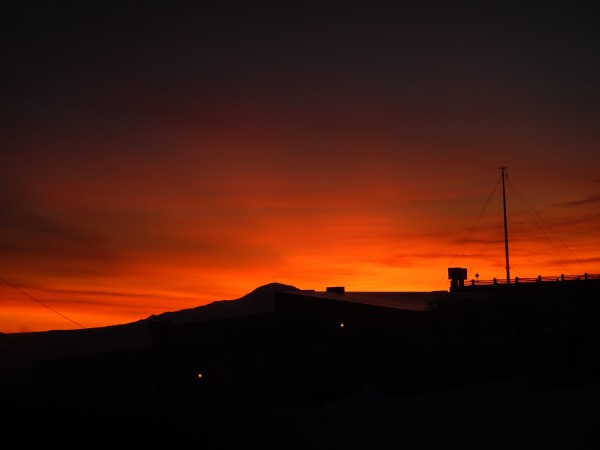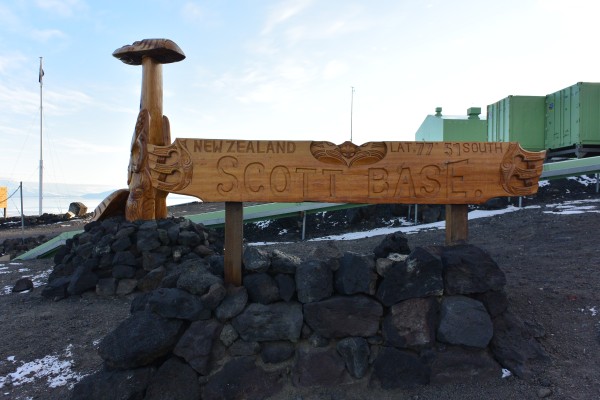Māori journeys South
Ngā haerenga a te Māori ki te tai tonga
New Zealand has been the starting point of many of the early Antarctic expeditions and has had a permanent presence in the Ross Sea region since 1957. It is one of the original signatories of the Antarctic Treaty (1959). This means we have a responsibility to understand and care for the unique Antarctic habitats, including the famous McMurdo Dry Valleys. In recognition of Aotearoa’s indigenous Māori population, and our Te Tiriti obligations, we also need to preserve this taonga to ensure Māori have opportunity to determine its cultural importance. Researching and protecting Antarctic environments – including Antarctic soils – is also critically important to our understanding of the impact and potential mitigation of climate change.

New Zealand’s role in the international management of Antarctica’s Ross Sea region is part of its kāwanatanga (governance) function. It must give regard for the interests of Māori and give effect to the principles of Te Tiriti o Waitangi (the Treaty of Waitangi). For Māori, preserving Antarctic soils knowledge is especially important in the context of preserving the right to understand Māori relationships with the land, and how mātauranga (knowledge, understanding) can be informed by Antarctic soil samples and data, both now and in the future.
The relationship Māori have with soils is highlighted in the book "Te Mahi Oneone Hua Parakore: A Māori Soil Sovereignty and Wellbeing Handbook" (Hutchings & Smith, 2020). The relationship Māori have with Antarctica and long-term aspirations for sustainable long-term management of the Ross Sea region must be explored further. There is a significant need to engage with iwi around iwi interests, rights and roles with regard to historical soil resources, in order to better understand their aspirations. Preservation of Antarctic soils and soil information will contribute to the ability of iwi to "articulate their narratives of connection to southern land- and sea-scapes" (Wehi et al., 2021), which are currently under-represented, and will add important cultural perspectives to wider conversations about New Zealand relationships with Antarctica.

According to traditional accounts of Polynesian oral history, the great explorer and chief Hui-Te-Rangiora sailed far south of New Zealand on board the waka Te Ivi o Ātea (the bones of Ātea) around 650 AD, and perhaps as far as Antarctic waters. Although it is difficult to know the details of Hui-Te-Rangiora’s journey, these narratives act to connect Polynesia to the southern oceans (Wehi et al., 2021). Other oral traditions tell of the Polynesian explorer Tamarēreti who ventured far South in the 13th century. Archaeologists have confirmed evidence of Polynesian settlement on subantarctic islands, specifically Enderby Island, from around that time (Anderson, 2005).
By 1849 Europeans had encountered Māori and Moriori on both Enderby Island and Auckland Island (Phillips, 2012). As there is no further material evidence of Polynesian voyaging south of Enderby Island (McGlone et al., 2007) (Wilmshurst et al., 2015), it remains to be determined whether the Antarctic continent had been reached by pre-European Polynesians (Anderson et al., 2022).

More recently, Māori artists have left their mark on Antarctica. In the 1960s, diesel engineer Robert Sopp carved a tekoteko or figurehead for Scott Base, New Zealand’s research station on the continent. In 2013, Ngāi Tahu expert carver Fayne Robinson and trainee carvers created an engraved post known as Te Kaiwhakatere o te Raki, or the “Navigator of the Heavens” for the base. The post represents Māori’s connection to Antarctica, the use of celestial navigation and the spirit of exploration. It is decorated with stars, waves, water and animals.
Inside Scott Base there are woven tukutuku panels by Māori women and in 2019, whakairo to commemorate the Ross Sea region Marine Protected Area were unveiled. The whakairo frame one of the main doorways into Scott Base. A short film that documents the journey that James York (Ngāi Tahu / Ngāpuhi) and Poutama Hetaraka (Ngātiwai / Ngāi Tahu) took to carve and install this whakairo can be viewed here, along with a booklet which provides further information.
